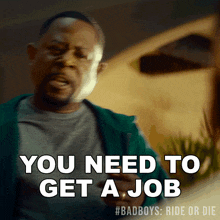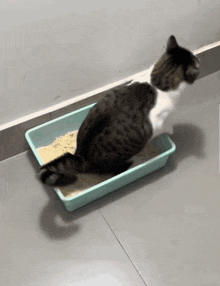If you’ve ever wondered how to set up a professional online presence, chances are someone told you to get a LinkedIn profile. And honestly? They weren’t wrong. Unlike Instagram or Twitter, LinkedIn actually does make you look more put-together and has many benefits.
In fact, some colleges and scholarship programs do ask for a social media profile when you apply. Having a LinkedIn account instead of something like an Instagram filled with reposts of viral memes definitely makes a better impression. But beyond just looking professional, is LinkedIn actually useful?
The answer: yes—but with some conditions. Let’s break down the highs, the lows, and how to actually make it work for you.
Let us slide into your dms 🥰
Get notified of top trending articles like this one every week! (we won't spam you)The Highs: Why LinkedIn is Worth Your Time

Photo by Greg Bulla on Unsplash

Take the Quiz: What Is Your Future Career?
Find out which career path aligns with your passions and strengths to shape your future success!
1. It Makes You Look Professional
Even if your resume is a little sparse, LinkedIn helps you showcase whatever experience you do have. Maybe you’ve volunteered somewhere, written articles, taken a summer course, or worked on a project—having that on LinkedIn instantly makes you seem more credible than just saying, trust me, I have experience.
It’s also a much better platform for reaching out to professionals, unlike other platforms like Instagram. If you randomly DM someone on Instagram asking for career advice, you might get ignored (or blocked). But on LinkedIn? That’s literally what it’s for.
2. The Algorithm Connects You to People Who Matter
One of LinkedIn’s best features is how it suggests people based on where you’ve worked, studied, or even just the type of jobs you’re interested in. If you interned somewhere, LinkedIn will show you others who worked there, meaning you can build your network without awkwardly searching for people one by one.

Photo by Airam Dato-on on Pexels
If you’re trying to connect with people in a specific field—say, you want to find students who studied abroad—it’s so much easier on LinkedIn because that’s exactly the kind of thing people post about. I have an internship where I'm required to do just that and LinkedIn has been a lifesaver.
3. You Can Actually Find Opportunities
If you know where to look, LinkedIn is way more than just a place for professional flexing. You can find competitions, internships, and even helpful college webinars—things that might not show up in a basic Google search. But here’s the thing: these opportunities won’t always be obvious.
Most of the time, you’ll need to actively search for them. They’re not going to appear on top of your feed, and sometimes they’re buried in posts that don’t seem relevant at first glance. You might scroll past a long personal story, only to realize at the very end that it’s actually about an internship opportunity or a scholarship application.

Photo by LinkedIn Sales Navigator on Pexels
Another tip? Check the comments. Sometimes people drop links to useful programs or hidden job listings in the replies, and you’d never know unless you looked. It takes effort, but if you put in the time to dig a little deeper, you can find some seriously useful stuff. I found half a dozen internships and competitions like this (fingers crossed I actually get them.)
The Lows: What No One Tells You About LinkedIn
1. It’s Not Just a Job Board
A common misconception is that LinkedIn is full of job and internship listings. While, yes, there are opportunities posted, most of the time, your feed will be flooded with:
- People posting motivational stories that may or may not be true ("I failed 20 times and now I own a Fortune 500 company at age 18." Sure.)
- Long posts about leadership, team-building, or something equally vague.
- Announcements that have nothing to do with you.
Unlike platforms like Indeed, where you just type in "internships" and scroll, LinkedIn requires more effort. You have to engage, network, and sometimes directly message recruiters or professionals in your field to get noticed.
2. Networking Isn’t as Easy as They Make It Sound
Everyone says, Just network! as if it’s as simple as adding someone and magically getting an opportunity. The reality?
It takes work. Some people won’t respond to your messages, others might connect but never interact, and it can feel like you're just collecting names without actual results.
The trick is to send personalized messages—not just "Hi, I’d love to connect!" but something specific, like mentioning a shared interest or a project they worked on. Engaging with posts by commenting or resharing can help get you noticed as well.

Photo by Airam Dato-on on Pexels
How to Make LinkedIn Work for You as a Teen
If you want to actually benefit from LinkedIn, here are some key tips:
- Complete your profile. A blank profile won’t get you anywhere. Add a decent photo, a short bio, and any relevant experience (even if it’s just school projects or volunteer work). Remember to add your skills so when you're searching for opportunities, LinkedIn tells you when your skills match.
- Engage with content. Comment on posts, share insights, and interact—it makes your profile more visible to others.
- Be strategic with connections. Don’t just add random people; focus on those in fields you're interested in. So, unless your aunt correlates with your desired field, don't add her.
- Message people with purpose. Instead of generic connection requests, mention something specific about their work or experience.
- Use LinkedIn’s job search feature—but don’t rely on it. Apply for opportunities, but also reach out to people in companies or fields you’re interested in.
Final Thoughts: Should You Be on LinkedIn?
If you’re serious about building a career or looking for opportunities early, LinkedIn is absolutely worth it. It helps you connect with the right people, makes you look professional, and gives you access to opportunities you wouldn’t find elsewhere.
But it’s not a magic shortcut. You won’t get job offers just by making a profile, and the networking process takes time. If you’re willing to put in the effort, though, it can open doors that other social media platforms simply can’t.










.jpg)
.jpg)

